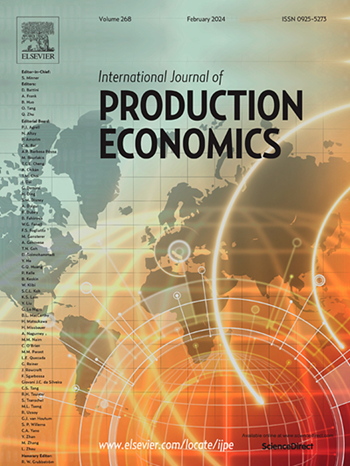Regulating the emissions of a bi-modal freight corridor considering non-cooperative authorities
IF 9.8
1区 工程技术
Q1 ENGINEERING, INDUSTRIAL
引用次数: 0
Abstract
Transport authorities often adopt mode-based emission regulations to mitigate air pollution from road and waterway modes. However, this unilateral approach can lead to freight shifts among different transport modes, distorting regulation efficiency. This paper explores the policy implications of emission regulation in a bi-modal (road and waterway) freight corridor, managed by two non-cooperative transport authorities. A Bertrand-like competition model is used to represent the market structure of bi-modal transport along the corridor. We introduce a concept, the Price-of-Regulation (), to quantify the market utility that an authority is willing to pay to reduce unit emissions. We examine the design of emission taxes under different s, considering both aggregated and spatially-distributed demands, under three market structures: substitutable, independent, and complementary. Our findings suggest that, for the case of aggregated demand, equilibrium emission taxes increase (decrease) both market size (shipment demand) and quantity of emissions when two modes are substitutable (complementary). We also demonstrate that a win-win emission tax scheme exists when two modes are substitutable, simultaneously enlarging the market size and reducing emissions. For spatially-distributed demand, a non-linear mathematical programming model and a non-dominated sorting genetic algorithm II (NSGA-II) are proposed to determine the win-win emission tax scheme. Our models and algorithms are validated using data from the Yangtze River Economic Belt. This study provides valuable insights for policymakers in designing effective emission regulations for bi-modal freight corridors.
考虑非合作当局的双式货运走廊排放管制
运输当局通常采用基于模式的排放法规来减轻公路和水路模式造成的空气污染。然而,这种单边做法可能导致货物在不同运输方式之间转移,扭曲监管效率。本文探讨了由两个非合作运输当局管理的双式联运(公路和水路)货运走廊排放监管的政策含义。采用类bertrand竞争模型来描述走廊沿线的双式联运市场结构。我们引入了一个概念——监管价格(Price-of-Regulation, PoR),来量化一个当局愿意为减少单位排放量而支付的市场效用。本文研究了在可替代、独立和互补三种市场结构下,考虑总量需求和空间分布需求的不同por下排放税的设计。我们的研究结果表明,在总需求的情况下,当两种模式互为替代(互补)时,均衡排放税增加(减少)了市场规模(运输需求)和排放量。我们还证明,当两种模式相互替代,同时扩大市场规模和减少排放时,存在双赢的排放税方案。对于空间分布的需求,提出了非线性数学规划模型和非支配排序遗传算法II (NSGA-II)来确定双赢排放税方案。利用长江经济带的数据对模型和算法进行了验证。本研究为政策制定者设计有效的双式货运通道排放法规提供了有价值的见解。
本文章由计算机程序翻译,如有差异,请以英文原文为准。
求助全文
约1分钟内获得全文
求助全文
来源期刊
CiteScore
21.40
自引率
7.50%
发文量
266
审稿时长
52 days
期刊介绍:
The International Journal of Production Economics focuses on the interface between engineering and management. It covers all aspects of manufacturing and process industries, as well as production in general. The journal is interdisciplinary, considering activities throughout the product life cycle and material flow cycle. It aims to disseminate knowledge for improving industrial practice and strengthening the theoretical base for decision making. The journal serves as a forum for exchanging ideas and presenting new developments in theory and application, combining academic standards with practical value for industrial applications.

 求助内容:
求助内容: 应助结果提醒方式:
应助结果提醒方式:


